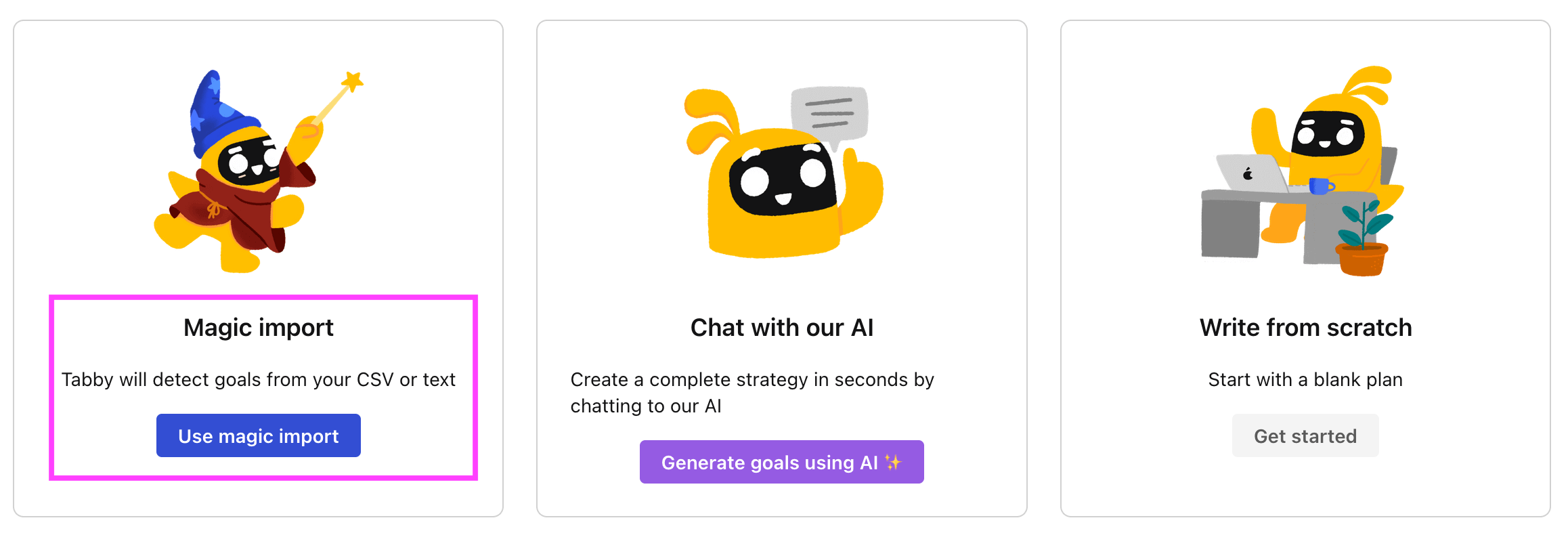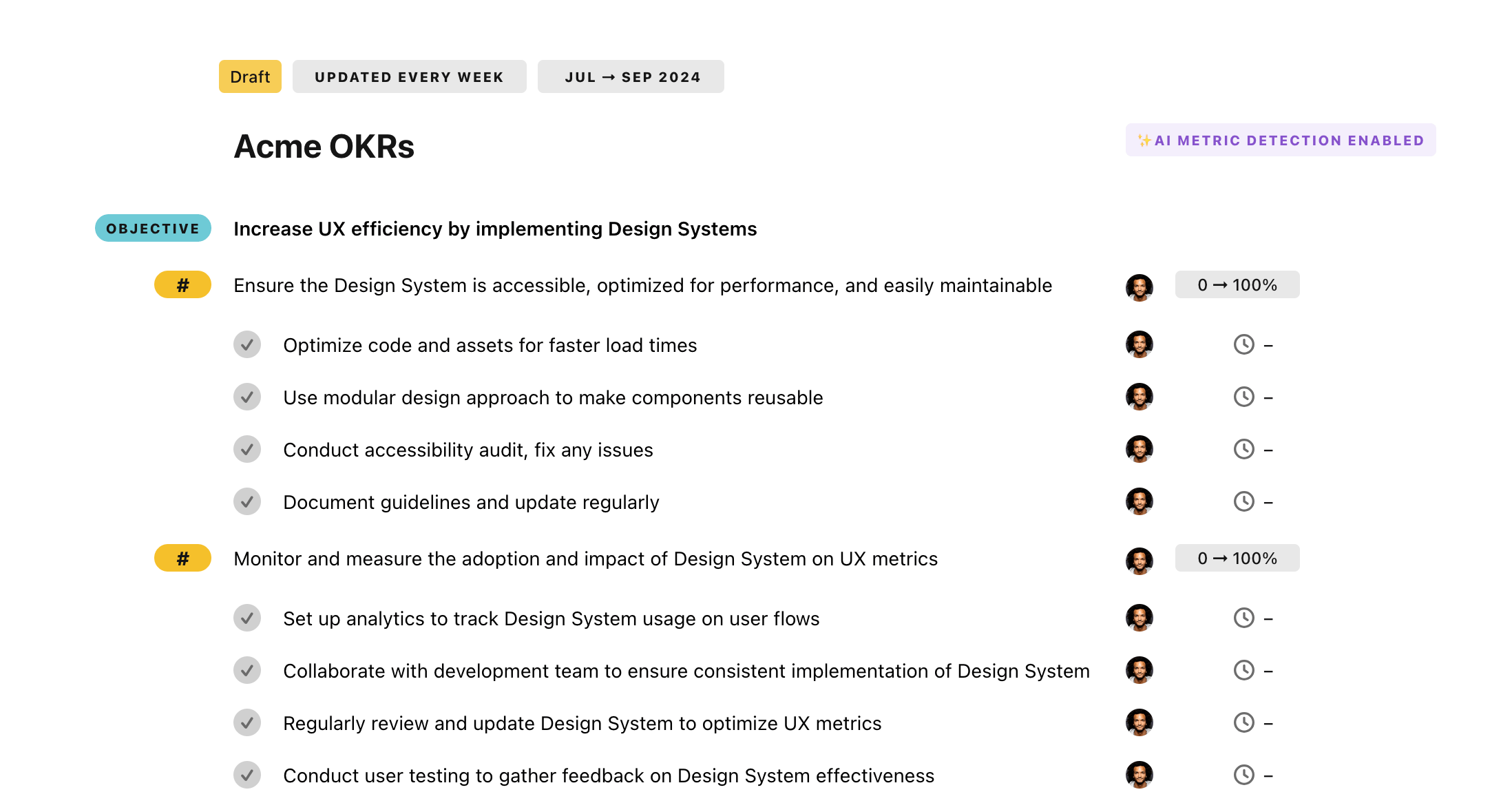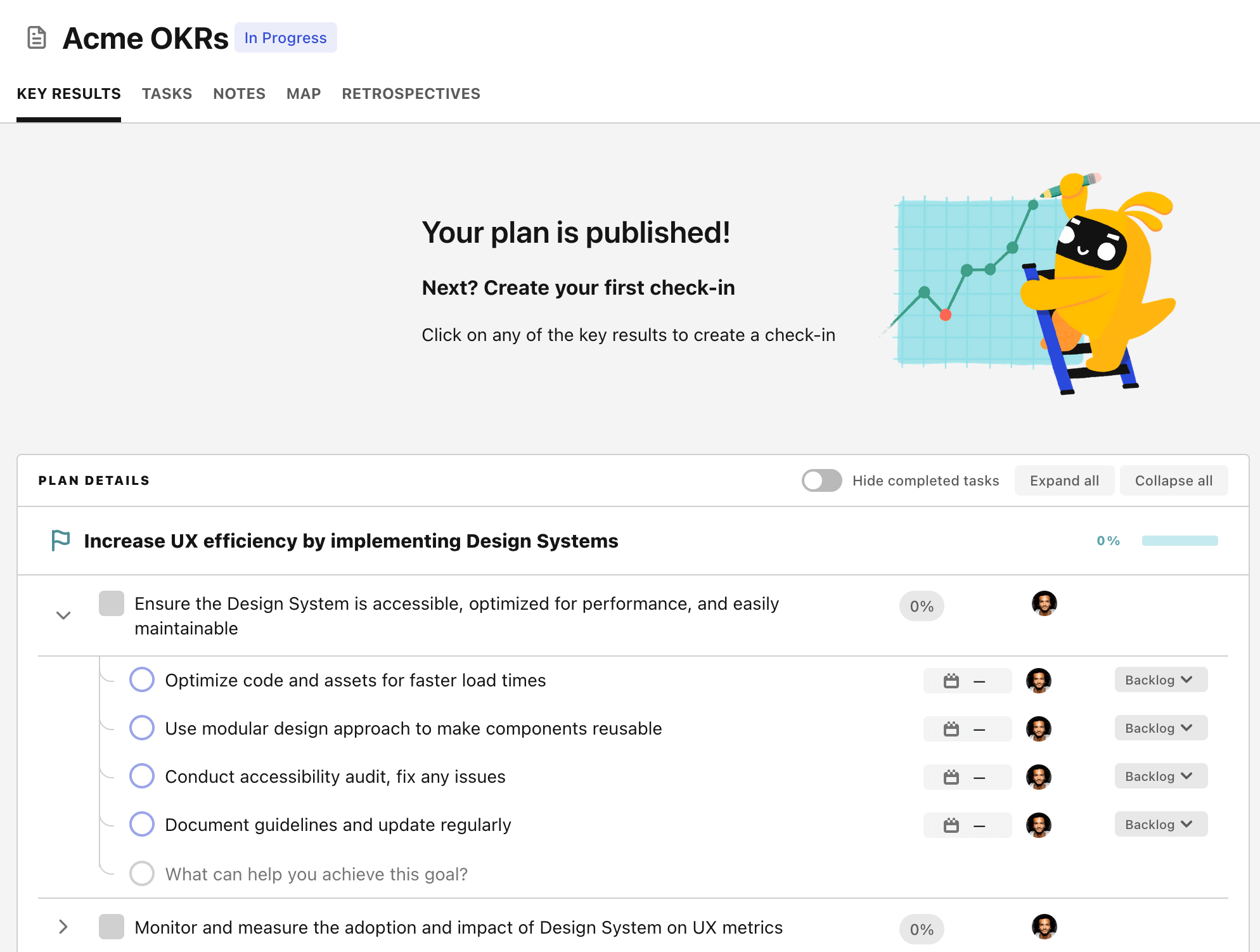OKR template to achieve 20,000 downloads post-launch
Your OKR template
A secondary step is to achieve a 4% conversion rate from your marketing campaigns. This requires a careful analysis of the current marketing strategy and continual optimization through A/B testing. Alongside this, personalized ads will be developed based on target customers' interests and needs.
The final step is to implement strategic SEO to garner up to half a million online views. This will involve optimizing website pages with specific keywords and identifying target keywords that align with your content. Regular monitoring and adjustment of SEO strategies will also be a crucial step.
By advancing along these three paths, you maximize your chances of reaching a successful post-launch with 20,000 downloads. The entire plan is a multi-faceted approach, combining influencer marketing, optimized marketing campaigns, and SEO strategy.
ObjectiveAchieve 20,000 downloads post-launch
KRSecure 1,000 influencers to promote the launch
Prepare a compelling proposal for product promotion
Create a list of 1,000 potential influencer contacts
Reach out and negotiate deals with influencers
KRAchieve a 4% conversion rate through targeted marketing campaigns
Analyze current marketing strategy to identify areas of improvement
Optimize campaign through constant A/B testing and adjustments
Develop personalized ads targeting client's specific interests and needs
KRImplement strategic SEO to reach 500,000 online views
Optimize website pages with these keywords
Identify targeted keywords relevant to our content
Monitor and adjust SEO strategies regularly
How to edit and track OKRs with Tability
You'll probably want to edit the examples in this post, and Tability is the perfect tool for it.
Tability is an AI-powered platform that helps teams set better goals, monitor execution, and get help to achieve their objectives faster.
With Tability you can:
- Use AI to draft a complete set of OKRs in seconds
- Connect your OKRs and team goals to your project
- Automate reporting with integrations and built-in dashboard
Instead of having to copy the content of the OKR examples in a doc or spreadsheet, you can use Tability’s magic importer to start using any of the examples in this page.
The import process can be done in seconds, allowing you to edit OKRs directly in a platform that knows how to manage and track goals.
Step 1. Sign up for a free Tability account
Go tohttps://tability.app/signup and create your account (it's free!)
Step 2. Create a plan
Follow the steps after your onboarding to create your first plan, you should get to a page that looks like the picture below.

Step 3. Use the magic importer
Click on Use magic import to open up the Magic Import modal.
Now, go back to the OKR examples, and click on Copy on the example that you’d like to use.

Paste the content in the text import section. Don’t worry about the formatting, Tability’s AI will be able to parse it!

Now, just click on Import from text and let the magic happen.

Once your example is in the plan editor, you will be able to:
- Edit the objectives, key results, and tasks
- Click on the target 0 → 100% to set better target
- Use the tips and the AI to refine your goals
Step 4. Publish your plan
Once you’re done editing, you can publish your plan to switch to the goal-tracking mode.

From there you will have access to all the features that will help you and your team save hours with OKR reporting.
- 10+ built-in dashboards to visualise progress on your goals
- Weekly reminders, data connectors, and smart notifications
- 9 views to map OKRs to strategic projects
- Strategy map to align teams at scale